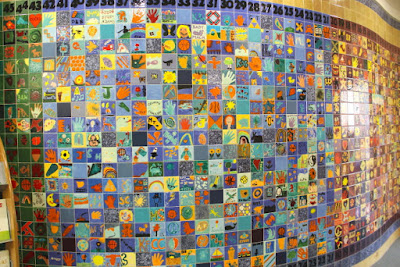American Fork (population 26,263) was settled in 1850 by Mormon Pioneers. The settlement was originally known as "Lake City" because of its proximity to Utah Lake; however, in order to avoid confusion with "Salt Lake City," in 1860 the community's name was changed to "American Fork." The town's name was selected because the American Fork River runs through the area.
In 1852 there were tensions between the settlers and Indians, so construction of a fort was started along the American Fork River to protect the settlers from possible Indian attacks. The fort was designed to contained an enclosed area that was 80 Rods by 74 Rods, which was an area large enough to house all of the area residents at that time. The original plans for the fort called for 12-foot high walls, but none of the walls were ever built to that height. In 1855 the plans were modified to enlarge the fort's enclosed area using logs made of poured clay, but only a 1.270 foot-long wall was ever constructed. Nothing remains of the fort today.
The site of the original fort is now known as Robinson Park, which is located on State Street. For movie buffs, Robinson Park is where they shot the carnival scenes in The Sandlot (1992) movie. Parts of the movie Footloose (1984), and other lesser known movies were also filmed in and around American Fork.
One monument in Robinson Park states that in February of 1866 the Territorial Legislature authorized the levy of a tax to support public schools. The majority of the citizens in American Fork approved the tax and in the fall of 1867 the first public school opened; thus, "American Fork thereby became torch bearer of the present free school system."
Another monument contains the following poem in honor of Sgt. Cory Wride:
Although there is no monument in the Park, during WW II Columbia Steel build a large plant in American Fork to support the War effort. This steel plant greatly increased that area's population and the City still holds an annual "Steel Days" celebration to honor the mill and the economic support the mill brought to the community. The Columbia Steel plant closed in 2001.
The City Library is also located in Robinson Park and is housed in a building with some nice art work.
The original City Hall building is located on a site that has been used for civic offices since 1861. A plaque on the front of the building states that "This building was designed...in 1903. Its Victorian Romanesque Revival style is characterized by round arched openings and a rough stone foundation. The roof is topped with a small central deck which was once adorned with a wooden belfry that was removed in 1959." The building is not open to the public; however there is a humorous grave stone on the front lawn that states: "American Fork. Born 1850 Died 1949. Victim of Parking Meter Plague."
Since the building is not open to the public, someone needs to remind the City to turn off their lawn sprinklers when the temperature drops below the freezing level. One tree was so laden with ice that several branches had broken.
BONUS HUMOR



















No comments:
Post a Comment